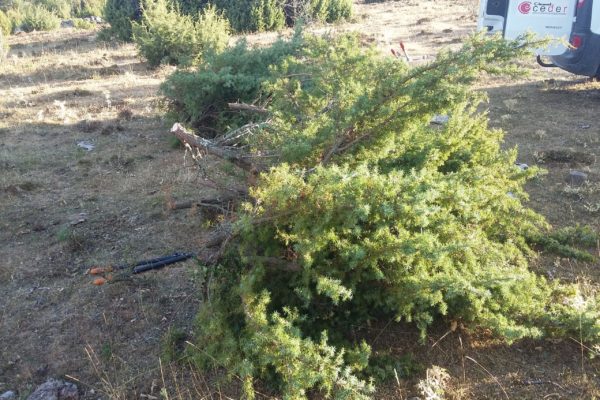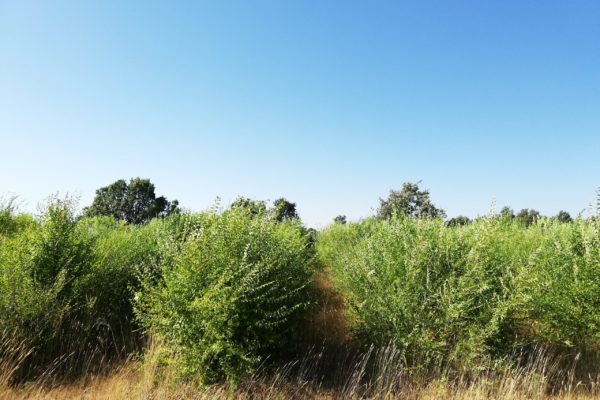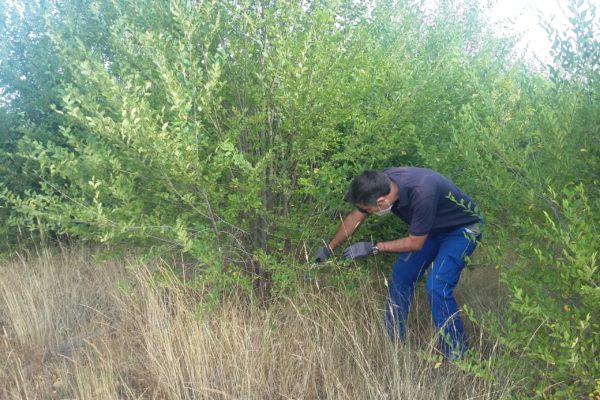
UNDERUTILISED SHRUB SPECIES SCREENING
Work package 1 started at the very beginning of the project, in July 2020
In this work package, related to the screening of underutilised tree and shrub species, a first selection was made considering sixteen initial species, chosen attending to the following criteria:
- Only tree and shrub species
- Underutilised species currently growing in Europe
- Interesting biomass composition and possibilities to be used to create BBI value chains
- Aptitudes to be cultivated in marginal lands in mixed plantations
- Aptitudes to be harvested and easily regenerated after harvesting
Thus, a group of at least six species per cultivation country (Germany, Romania and Spain) were selected from the following list: Betula pendula Roth, Calluna vulgaris (L.) Hull, Carpinus betulus L., Cistus ladanifer L., Cupressus sempervirens L., Cytisus scoparius (L.) Link, Euonymus europaeus L., Hippophae rhamnoides L., Juniperus communis L., Populus nigra L., Robinia pseudoacacia L., Rosmarinus officinalis L. Rubus fruticosus L., Spartium junceum L., Ulmus minor Mill., Ulmus pumila L.
Ecological aptitudes of the plants in the initial list to grow in marginal lands and/or extreme conditions and to be cultivated in mixed row plantations, together with their potential as raw materials to create value chains in the bio-based industries, were taken into account to choose at least six species to be cultivated in Germany, Romania and Spain. The selected species were:
- In Germany: Betula pendula, Calluna vulgaris, Cytisus scoparius, Hippophae rhamnoides, Robinia pseudoacacia and Rubus fruticosus.
- In Romania: Betula pendula, Carpinus betulus, Euonymus europaeus, Juniperus comunis, Populus nigra and Robinia pseudoacaia.
- In Spain: Cistus ladanifer, Cupressus sempervirens, Juniperus communis, Rosmarinus officinalis, Spartium junceum, Ulmus minor and Ulmus pumila.
A protocol to collect biomass samples of the selected species in each country was defined. The samples corresponding to each species were collected from two different origins and sent to CIEMAT to be conditioned. Afterwards, they were analysed by the laboratory partners to identify their potential as raw material in the BeonNAT bio-based value chain. The partners involved in the analyses were: CIEMAT (components), IDOASIS (extracts), IPB-CIMO (essential oils), RE-CORD (biochar and active carbon) and TOLSA (absorbents).
Taking into account the chemical profile of the different species and some agronomic factors, four species were selected to be cultivated in mixed row plantations in the different countries: Betula pendula + Cytisus scoparius and Robinia pseudoacacia + Rubus fruticosus in Germany; Robinia pseudoacacia + Populus nigra and Betula pendula + Carpinus betulus in Romania; and, finally, Juniperus communis + Ulmus pumila and Cistus ladanifer + Rosmarinus officinalis in Spain.
Once the selection of suitable tree and shrub species for marginal lands have been made, the legal forest and agricultural framework will be identified at three levels European, national and local in Romania, Germany and Spain.
To this end, the rules regarding land abandonment and the cultivation of these species on agricultural and forestry lands are being studied. Always considering the current Common Agricultural Policy (CAP) 2014-2020 (Regulations 1307/2013 and 1305/2013) and its transposition at the national level in each country, and forestry laws of each country or regions.
Legislation on the land use change from agricultural land to forestry and vice versa is also being studied, in addition to the authorisations, bureaucratic restrictions about harvesting timber in forest and management of biomass resource from forests/out of forests.
The first results will be discussed among the partners USV, CIEMAT, BTU, PEFC and CESEFOR at the end of September.






